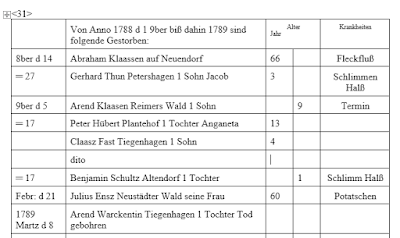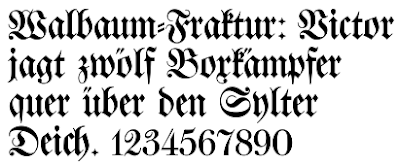My great-grandfather Gerhard T. Siemens #6463 (1834-1908) immigrated to Canada in 1874 and was naturalized, thereby becoming a British subject. (
All Canadians were British subjects until 1947.) I wanted to know more about his naturalization. Here is the little bit that I have found - it may give you some ideas for searching for the naturalization of your Canadian ancestor.
First, the 1901 census asked when a person was naturalized, and the enumerator recorded that he immigrated in 1874 and was naturalized in 1882 (circled in red).
 |
| Gerhard Siemens household, 1901 Canada census, Morris Municipality sub-district, Provencher district, Manitoba, p. 4, household 30, lines 4-12. Accessed at www.ancestry.ca on 29 June 2014. |
This, of course, is better than nothing; but it's not a primary source. Gerhard told the enumerator who wrote it down. We hope that Gerhard remembered the right date, that he wasn't distracted, that he didn't stutter, that the enumerator heard him correctly, that there wasn't a baby crying at that moment, that the enumerator didn't forget to ask him and just filled in some number. It's a secondary source.
I have obtained Gerhard Siemens' Saskatchewan homestead file from 1907, and he affirmed that he was naturalized before 1889 in Manitoba. That fits with what the 1901 census stated, so that is a confirmation.
 |
| Sworn statement of patentee Gerhard Siemens, 7 February 1907, homestead file #1239121, Land Registration District of Assiniboia, Regina, Saskatchewan accessed online at Saskatchewan Archives Board Homestead Index 1872-1930, Reference #S 42.1239121, http://sab.minisisinc.com on 16 April 2014. |
 |
| Detail of homestead statement above. |
But I would still like to have a primary source.
Citizenship and Immigration Canada holds the naturalization records for 1854 to the present, but the original records for naturalizations before 1917 have been destroyed. Only a card index remains, and there is not much information on the card index. A Canadian citizen or resident can make an Access to Information request and pay 5 CAD to get a copy of the index card. I am neither, but fortunately I have cousins who are Canadian citizens, so they ordered a copy for me.
The index card was rather sparse, but upon close examination it does give the answer.
 |
| Gerhardt T. Siemens naturalization card, Citizenship and Immigration
Canada, Ottawa, Ontario, file #032790-85. Index card from Access to
Information request on 24 August 2016. |
So what are the results? It has his name (Gerhardt T. Siemens) and date of birth (34/05/21, which is 1834 May 21, his new-style birth date). And it shows that he was born in the USSR, which means that the card index must have been made sometime after 1922, when the Soviet Union came into existence (otherwise it would have shown Russia as his birth country). But the document is a primary source to the fact that he was naturalized, something that the 1901 census and his homestead application do not do.
There is also a mysterious section of "actions," which appears to be the record of correspondence between officials. These are all dated in 1885 and 1886 - was Gerhard naturalized at that time instead of 1882 as the census reports? Does the pre-printed "85" at the end of the file number "032790-85" indicate that his citizenship was granted in 1885?
But at the lower right of the white card, there is a faint date. I had to look carefully even to find it.
I am quite sure that it reads "85/12/23," which would be the date 23 December 1885. When combined with the dates of the correspondence happening in late 1885 and early 1886 and the preprinted "85" on the form, this makes me think it is his naturalization date!
Why did the 1901 census enumerator record 1882 as his naturalization? I don't have an answer. But by 1907, it seems as though Gerhard was uncertain about his naturalization date, since he wrote "before 1889" on the homestead application. I think 23 December 1885, is the best date for his naturalization, although the evidence is conflicting.
IMPORTANT NOTE - If your ancestor was naturalized after 1917, which would include the Russländer immigrants, then much more information is listed on the card index, which might make you more eager to send off for the file.



























